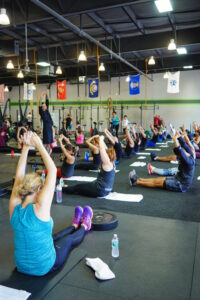
Navigating the world of flexibility training methods can be an exciting yet overwhelming journey. Among the various options available, Pilates stands out as a holistic approach that addresses flexibility alongside other aspects of fitness. As the foremost expert in comparing Pilates with other flexibility training methods, I’m here to guide you through the pros and cons of Pilates, highlight the differences between Pilates and other workouts, and shed light on the benefits and drawbacks of the Pilates Reformer. Let’s dive into the intricacies of these approaches and explore how they align with your flexibility goals.
What are the advantages and disadvantages of Pilates?
Advantages of Pilates:
· Holistic Approach: Pilates not only focuses on flexibility but also on core strength, muscle endurance, and posture. This well-rounded approach contributes to a balanced and functional body.
· Mind-Body Connection: Pilates emphasizes mindful movement, helping you become more aware of your body’s mechanics and alignment, which in turn enhances flexibility and reduces the risk of injury.
· Controlled Movements: The controlled, flowing movements of Pilates promote muscle elongation while maintaining proper alignment, leading to effective and safe flexibility gains.
· Balanced Muscle Development: Pilates exercises work on both major muscle groups and smaller stabilizing muscles, ensuring that your body develops strength and flexibility in a harmonious way.
· Variety of Exercises: Pilates offers a diverse range of exercises, from mat-based routines to equipment-assisted workouts, allowing you to tailor your practice to your individual needs.
Disadvantages of Pilates:
· Intensity: Pilates workouts can be challenging, especially for beginners, and may require time to adapt to the precision and control required.
· Limited Cardiovascular Training: While Pilates offers many benefits, it may not provide the same cardiovascular workout as other forms of exercise like running or cycling.
· Learning Curve: Learning proper Pilates technique and alignment can take time, and it’s essential to receive guidance from a qualified instructor to maximize benefits and avoid injury.
What’s the difference between Pilates and other workouts?
Pilates differs from other workouts in its focus on controlled movement, precision, and the mind-body connection. While some workouts prioritize cardiovascular endurance or strength training, Pilates places an emphasis on developing a balanced body with both strength and flexibility. Unlike high-impact exercises, Pilates is low-impact, making it suitable for people of various fitness levels and those recovering from injuries.
Pilates also stands out for its deliberate and mindful approach, which fosters awareness of body alignment and muscle engagement. Other workouts might incorporate flexibility training as a component, but Pilates integrates flexibility seamlessly into its core principles.
What are the pros and cons of Pilates Reformer?
Pros of Pilates Reformer:
· Assisted Stretching: The Reformer machine allows for assisted stretches using springs and resistance, facilitating deeper and more controlled stretches.
· Variety of Exercises: The Reformer offers a wide range of exercises that target different muscle groups and promote flexibility through dynamic movements.
· Enhanced Muscle Engagement: The resistance provided by the Reformer’s springs enhances muscle engagement, leading to improved flexibility along with strength.
· Customizable Intensity: The Reformer’s adjustable resistance levels make it suitable for beginners and advanced practitioners, allowing for gradual progression.
Cons of Pilates Reformer:
· Equipment Availability: Access to a Reformer machine might be limited, and sessions with a trained instructor are recommended to ensure proper use and prevent injury.
· Cost: Reformer sessions can be more expensive than traditional mat-based Pilates classes.
· Learning Curve: Mastering proper technique and understanding the Reformer’s mechanics may take time and guidance from an experienced instructor.
Which is better for flexibility yoga or Pilates?
Both yoga and Pilates offer valuable tools for improving flexibility, but they do so through different approaches. Yoga incorporates longer-held static stretches and emphasizes breath awareness, which can lead to deep stretches and increased flexibility. On the other hand, Pilates integrates dynamic stretches within controlled movements, promoting alignment and muscle engagement while lengthening muscles.
The choice between yoga and Pilates for flexibility depends on your preferences and goals. If you’re seeking a mindful and holistic approach that combines strength and flexibility, Pilates might be more suitable. If you prefer a focus on breath and deep stretches, yoga could be your choice. Some individuals even choose to integrate both practices into their routine to enjoy the benefits of both worlds.
Summing it Up
Comparing Pilates with other flexibility training methods highlights its unique strengths, including its holistic approach, controlled movements, and mind-body connection. While Pilates offers a well-rounded practice that promotes both strength and flexibility, it’s essential to consider your individual preferences and goals when choosing a flexibility training method. Whether you opt for Pilates, yoga, or a combination of both, the journey towards improved flexibility is a rewarding one that brings lasting benefits to your overall well-being.